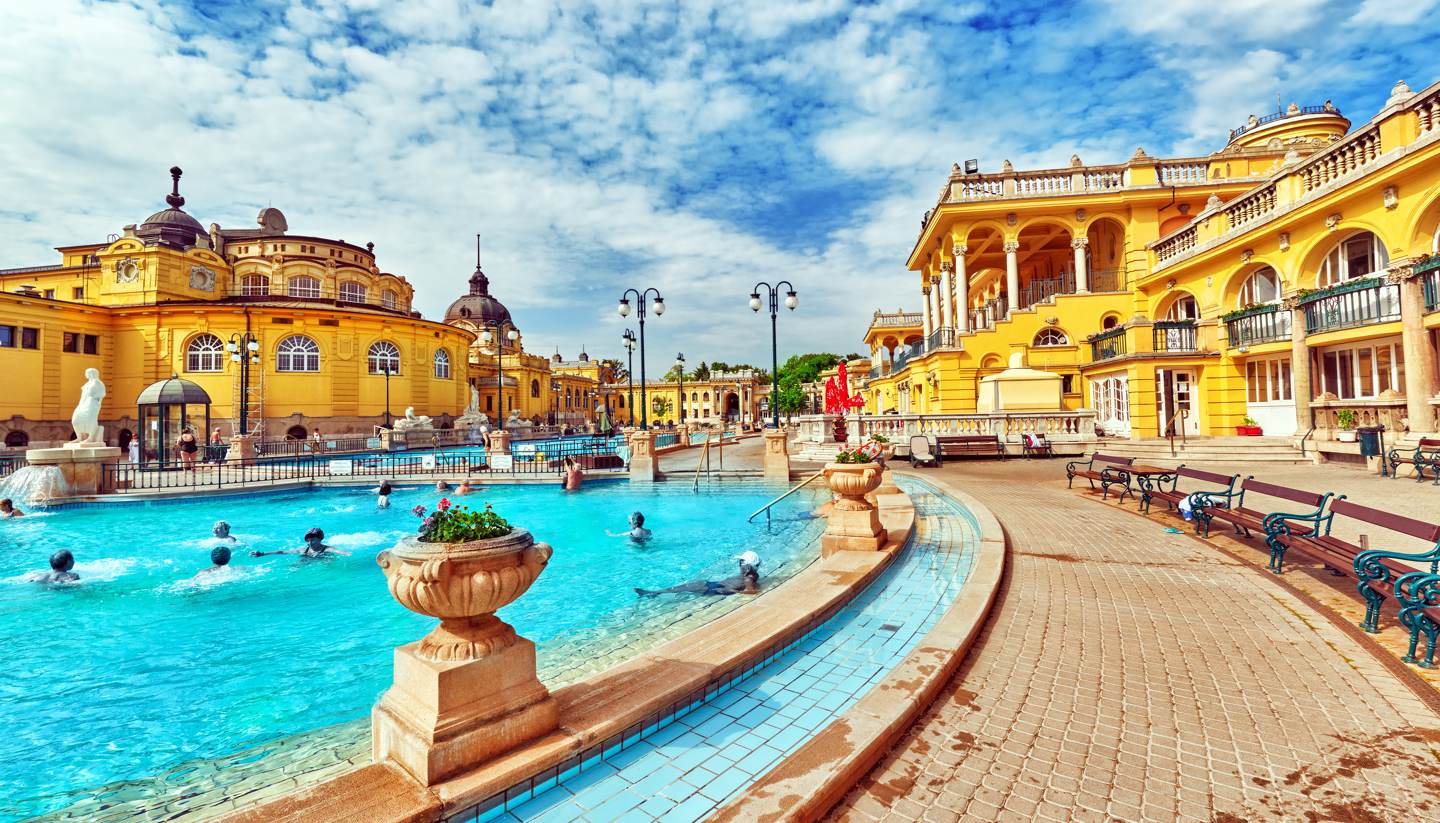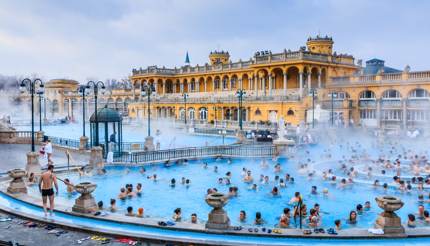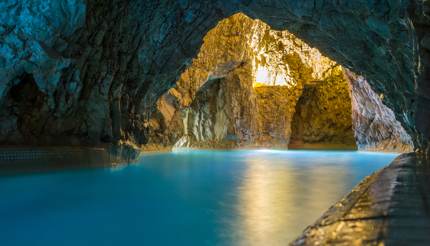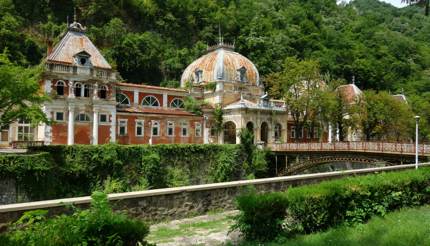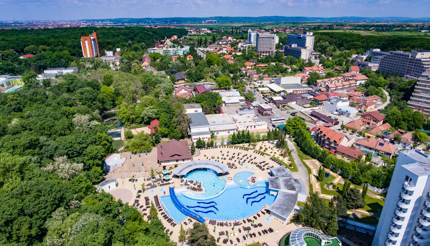Take a spa break in Central Europe where you can immerse yourself in history and the steamiest salubrious waters
With the hectic pace of modern living, it is easy to understand why spa tourism is now more popular than ever. And for us living in Europe, we are indeed very fortunate because a large part of Central Europe sits in a region called Carpathian Basin. This is where the Earth’s crust is thin enough to allow thermal springs to bubble up, creating wonderful thermal pools which we can soak and relax, allowing curative waters to soothe our aches and pains.
In this article, we aim to highlight nine amazing spa towns across Central Europe which you can soak to your heart’s content.
Budapest, Hungary
The most obvious starting point for your first foray into Central European spas is in the Hungarian capital of Budapest. This historical city, oozing with charm and grand architecture, boasts a wealth of hot springs. Locals have continued to soak in the curative waters since the Romans settled here, so when in Budapest, bathe as the locals do. There are several bathhouses to choose from, but our firm favourite is Szechenyi Baths, one of the best and largest medicinal baths in Europe. This ornate complex offers visitors 21 indoor and outdoor pools, with waters supplied from two thermal springs and said to contain calcium, magnesium, hydro-carbonate, among other minerals, and they are good for degenerative joint diseases and chronic arthritis.
Miskolctapolca, Hungary
If you’re looking to have a dip with a difference, then consider venturing to the historic spa town of Miskolctapolca for a soak in a cave bath. Since ancient times, the Miskolctapolca cave bath and its thermal waters were believed to have healing powers, although the 150m-long limestone spot only became popular after the Ottoman occupation of Hungary (16th-17th century). Today, it has both covered and open-air pools, where visitors can spend more time soaking because the waters are said to have a lower salt content.
Hévíz, Hungary
For another natural bathing experience, the idyllic spa town of Hévíz is home to Lake Hévíz, one of the largest thermal lakes in the world. With temperatures reaching up to 30°C (90°F), the lake is perfect for soaking in all year round. It is not just the water that is good for the aches, the lake’s mud is also thought to have therapeutic qualities, and you can indulge in a mud scrub or massage at the spa too. Pro tips: check into the St Andrew’s Hospital for Rheumatology if rheumatic diseases are affecting your quality of life.
Timișoara, Romania
Romania is home to about 70 mineral and thermal springs. A good place to start a sojourn of soaking is at Termalum Spa in the city of Timișoara, which is closer to Budapest than Bucharest.
This upmarket spa and health club allows you to submerge in a stylish indoor pool before taking to the relaxation room, the Finnish sauna or the steam room. Subsequently, you can also unwind in the café bar while sipping on a fresh fruit juice or take to the pretty garden for a stroll. Massages, body wraps and hydrotherapy treatments can also be added to your day’s itinerary.
Banat, Romania
You can’t help but consider the mineral waters at the Herculane Baths in the picturesque Caraş-Severin county of Banat to be magical – after all, they were dedicated to the mythical Greek-Roman hero-god Hercules. It is even believed that Hercules once came here and soaked in these waters. This historical spa was built by the Romans during their invasion of the Dacian territories, and the salutary effects of its waters continue to attract tourists from all over the world. Situated on an ancient volcanic fissure, the bath’s highly sulphurous waters are said to increase the body’s resistance to diseases, and if that doesn’t impress you, the magnificent surrounding views of Cerna River Valley certainly will.
Băile Felix, Romania
Romania’s largest health resort, Băile Felix, dates to the 18th century and is perched within a beautiful hilly area, encircled by dense oak tree woods – perfect for exploring before a lengthy soak. Open all year round, this resort’s steaming waters can get as high as 49°C (120°F), and you can choose between an assortment of indoor and outdoor pools, saunas and Jacuzzis. Visitors who suffer from rheumatism and nervous disorders will find relief in the oligomineral-rich waters, as well as through applying the equally remedial mud to their body.
Dolenjske Toplice, Slovenia
Leave the city life far behind and check yourself in for a break and a bathe in Dolenjske Toplice, one of the oldest spa resorts in the region. The Balnea Wellness Centre, a particular highlight, is situated on the edge of the resort’s park and offers a tranquil escape. Visitors can switch between the selection of saunas, steam baths, and indoor and outdoor pools, with waterfalls and waterjets, as well as a Japanese sweat bath and a chill-out terrace. The nearby parkland is worth a wander before returning for a well-deserved massage or facial.
Podčetrtek, Slovenia
This little village in the country, overlooked by a castle, can seem unassuming at first, but its expansive Terme Olimia thermal spa is highly renowned. With thermal waters ranging from 28°C to 35°C (82°F to 95°F), the bathing complex is the place to go for a boost of magnesium and calcium. A range of saunas, indoor and outdoor pools, with geysers and water jets are accessible. In the summer, the outdoor Thermal Park Aqualuna is excellent for a family day of fun, with a wave pool, waterslides, and an aqua-jungle adventure course.
Rogaška Slatina, Slovenia
Known for its curative mineral waters and crystal glass, Rogaška Slatina, a centuries-old and world-famous spa resort, promises the ultimate wellness retreat. Hailing back to Roman times, the town’s hot springs became popular in 1572 – as the governor of Styria made use of the waters on the advice of his physician. Today, the spa centres are adequately staffed with doctors and medical professionals offering a myriad of treatments including gastroenterological and metabolic diseases.
This article was first published in 2007 and has been updated on 20/08/2019.
Before you go, check out the Hungary travel guide, Romania travel guide and the Slovenia travel guide.
If you found this interesting, you might also enjoy:
